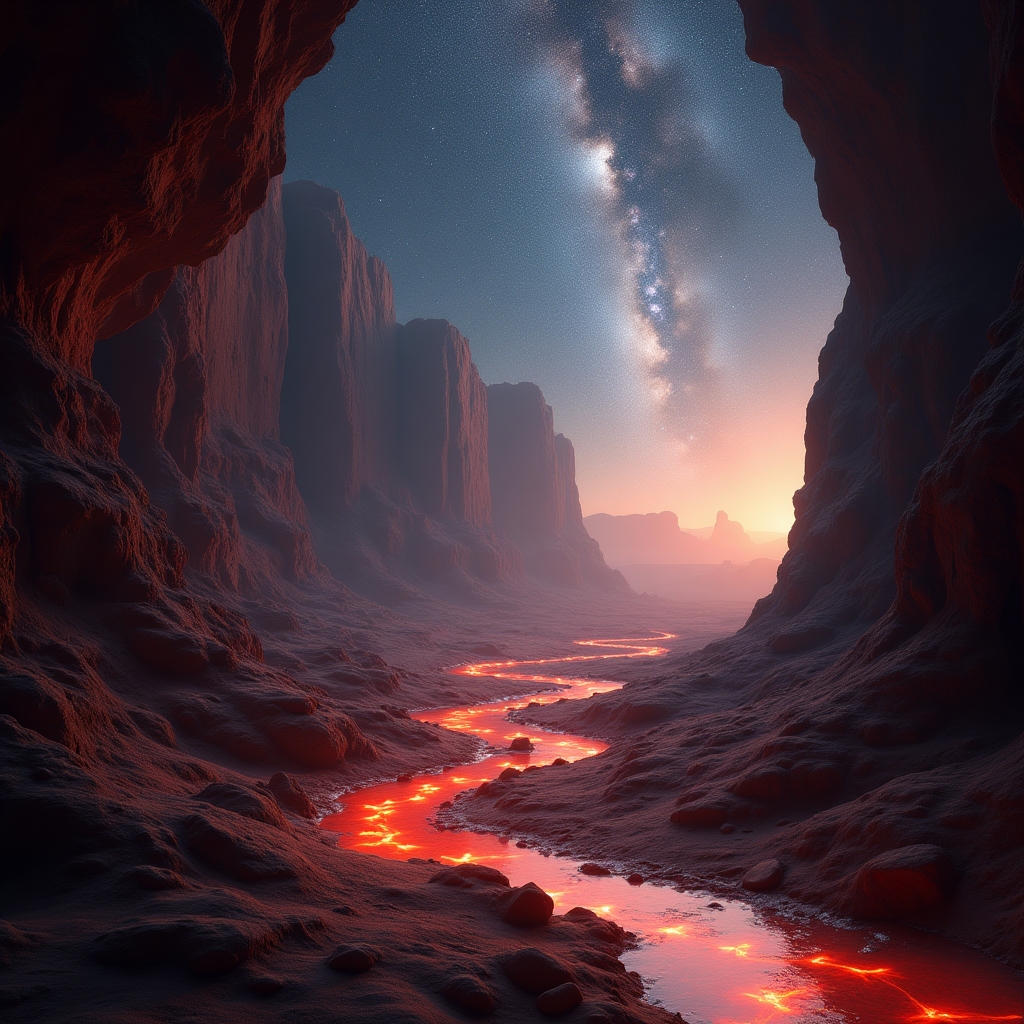In the heart of the cosmos, amidst swirling galaxies and distant stars, lies a power so profound it may just hold the key to life beyond Earth. Cosmic rays, those energetic particles from deep space, possess the extraordinary ability to sustain life hidden beneath the surface of worlds like Mars, and icy moons like Enceladus and Europa.
iN SUMMARY
- 🌌 Cosmic rays could power life beneath Mars' surface.
- 🔬 Interaction with ice releases energy-carrying electrons, known as radiolysis.
- 🧊 Life might exist in environments without sunlight or heat.
- 🚀 Discoveries change our understanding of life's potential habitats.
According to a recent breakthrough study, cosmic rays might be the secret energy source allowing microscopic life to thrive in hidden, watery niches far from the Sun’s warm embrace. This new research, discussed in detailed sections in [Science Daily](https://www.sciencedaily.com/releases/2025/08/250803011834.htm "Science Daily's article on cosmic rays and life on Mars"), delves into the fascinating process, known as radiolysis, where cosmic rays interact with water or ice, prompting the release of energy-carrying electrons.
The Hidden Potential of Radiolysis
Think of it this way: buried under the Saharan sands is water, invisible yet sustaining the life it cradles. Similarly, beneath the red surface of Mars or the icy crusts of moons orbiting Jupiter and Saturn, invisible forces might be at work. Radiolysis is the process whereby cosmic rays knock electrons loose in water and ice, releasing energy that can be harnessed by living organisms.
This intriguing idea suggests that life doesn’t always need the warmth of sunlight or the heat from a molten core, just a little moisture and the persistent bombardment of cosmic radiation.
Exploring Mars as a Potential Habitat
Mars, the fourth planet from the sun, has captured our imagination for decades. Prominent missions like the [Mars Rover](https://mars.nasa.gov/ "NASA's Mars Exploration Program"), sent by [NASA](https://www.nasa.gov/ "Official NASA website"), have revealed a planet shaped by water in its ancient past. But today, the Martian surface is cold and dry. However, the discovery of liquid water just below the surface opens up possibilities for the existence of life. And it’s here, researchers propose, that radiolysis might be making its subtle magic.
Moons in the Spotlight: Enceladus and Europa
Out beyond Mars, the icy moons Enceladus and Europa orbit their gas giant parents, Saturn and Jupiter. Beneath their icy shells, oceans of liquid water slosh and churn. The presence of water is promising, but what about energy? Cosmic rays, even far from the sun, continue to rain down, potentially providing the energy needed for life through radiolysis.
- Enceladus: Known for its geysers that spew water into space, offering tantalizing hints of its subsurface ocean.
- Europa: With its cracked ice surface, suggesting geothermal activity below.
The Science Behind Cosmic Rays
Cosmic rays are high-energy particles that originate from outside our solar system. They are primarily composed of protons and atomic nuclei, making them extremely energetic and capable of penetrating substances, including thick layers of rock and ice.
| Component | Description |
|---|---|
| Protons | Primary component, making up about 90% of cosmic rays. |
| Atomic Nuclei | Includes elements like helium, contributing approximately 9%. |
| High-energy Electrons | Occur in smaller numbers but are significant in interactions. |
Cosmic Rays and Their Terrestrial Impact
On Earth, we are protected from the full force of cosmic rays by our atmosphere and magnetic field. Yet, they still play a role here, influencing phenomena like cloud formation and even technological systems. In places with less protection, like Mars or far-off icy moons, cosmic rays have a more pronounced impact.
Could Earth Hold Secrets to This Phenomenon?
Surprisingly, Earth provides us with clues to understanding the potential of radiolysis. Certain ecosystems, such as deep-sea hydrothermal vents and caves, thrive without sunlight, instead relying on chemical reactions to sustain life. Similarly, cosmic rays could drive similar processes on Mars.
Researchers examining caves globally, including sites in [Halifax, Canada](https://inthacity.com/headlines/canada/halifax-news.php "Halifax city portal for local news"), have discovered microbial life surprisingly adapted to these extreme conditions, feeding from seemingly barren rock through chemical processes akin to radiolysis.
The Future of Space Exploration and the Search for Life
This breakthrough shifts our understanding of where life might exist. Missions from China’s CNSA or NASA's planned missions to those moons could provide more data. Now, with the knowledge that cosmic rays might support life, we look forward with new hope. The possibility of detecting such life is not a far-off dream but a distinct possibility within our lifetime.
A Call to the Curious Explorers
This exploration raises a question: What if life can exist in the most unexpected places? And how might that change our understanding of the universe and our place within it? As you ponder these possibilities, consider engaging with the [iNthacity community](https://www.inthacity.com/blog/newsletter/ "Become part of the iNthacity community and discussion").
What are your thoughts on these potential worlds thriving in shadows? Can cosmic rays really serve as the ignition of life?
Join the discussion, share your insights, and let's dream together of what may yet be discovered beneath the surface of our neighboring planets and moons. After all, in the words of the great Carl Sagan, "Somewhere, something incredible is waiting to be known."
Disclaimer: This article may contain affiliate links. If you click on these links and make a purchase, we may receive a commission at no additional cost to you. Our recommendations and reviews are always independent and objective, aiming to provide you with the best information and resources.
Get Exclusive Stories, Photos, Art & Offers - Subscribe Today!
























Post Comment
You must be logged in to post a comment.